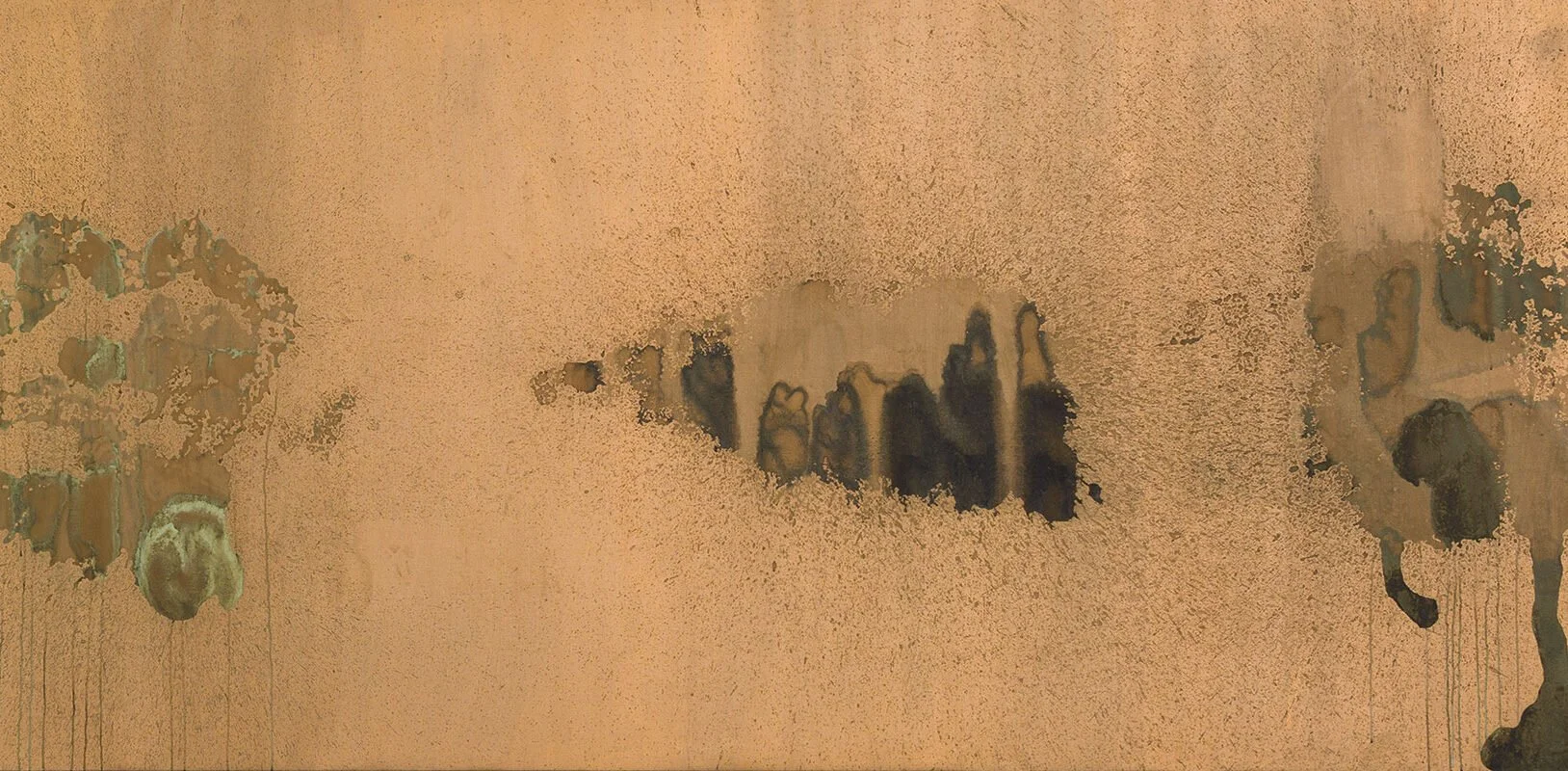Altered States: Warhol’s ‘Oxidation’ Paintings
Andy Warhol’s Oxidation paintings represent the artist’s radical approach to Abstract Expressionism, a movement popularized by painters like Jackson Pollock and Mark Rothko after World War II, and a style Warhol didn’t experiment with until late in his career. Between 1977 and 1978, however, when Warhol began testing the corrosive effects of oxidation by mixing copper paint and urine, the beautifully iridescent canvases were a critical breakthrough at a time when his standing in the art world had taken a hit. The Oxidation series, along with abstract works like the Rorschachs and Shadows, allowed Warhol to reinvent himself yet again.
To create the Oxidation works, Warhol and his assistants mixed dry metallic powder in water before adding acrylic medium as the binder.
Canvases were spread out on the studio floor and coated in copper paint. Warhol’s assistants or Factory visitors were then invited to urinate on the canvases while the paint was still wet. As the urie acid oxidized the metal in the copper paint, a range of unpredictable patterns emerged.
Before Warhol’s death in 1987, the Oxidation paintings were exhibited only three times, including the Paris Art Fair FIAC at the Grand Palais, where the artist first noticed the volatility of the works. “When I showed them in Paris, the hot lights made them melt again,” he said.
“It’s very weird.. they never stopped dripping.” More than 45 years later, unpredictability remains a hallmark of the series. In June of 2020, after a power outage disabled the museum’s climate control for several days, staff conservators noticed changes similar to what Warhol observed in Paris. New drips appeared on the surface of Oxidation (1978), shown here, and the areas of corrosion changed color.
This presentation seeks to answer a deceptively simple question: What happened? Museum conservators, with help from colleagues in the field and scientists, have been hard at work finding answers. The examination and analysis of the Oxidation paintings in the museum’s collection will contribute to proper stewardship, preservation, and treatment of the nearly 100 other works worldwide.




